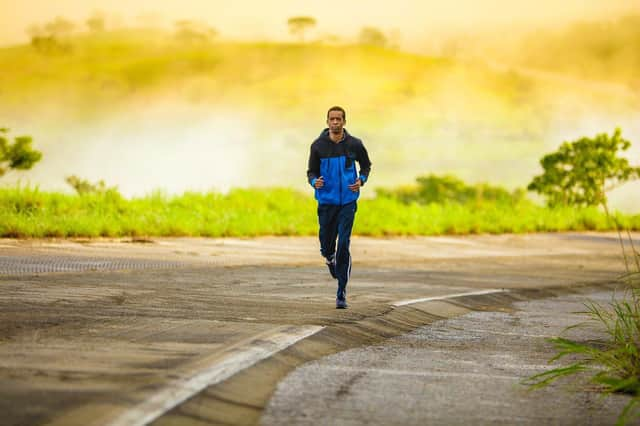FEELING GREAT: It’s important what you wear when exercising outdoors


I hope you have followed the advice and felt some instant benefits!
Today I’m going to not just list the benefits or rules of keeping fit outdoors, but offer some vital tips and advice for doing it in the right manner.
Advertisement
Hide AdAdvertisement
Hide AdIt’s important for your health – both physical AND mental – that you don’t wait until spring and the lighter nights before heading outdoors. Do it today.
Outdoor exercise is good for your body and mind, no matter the time of year. Getting outside, even in the cold, allows us to reconnect with nature, break away from the digital world we all live in today.
What you wear is as important as making the effort to go out and my tips here on what you should be wearing will help you feel good. We all feel better when we are nicely dressed, wearing new clothes and it gives us all a lift. Well a new pair of running trainers, walking boots or insulated jacket will give you the same feel-good factor!
1: The quickest way to lose body heat is to get wet. Water moves heat away from the area of highest concentration (your body) to the lowest (cold air outside) — getting wet will quickly leave you damp and miserable. If you're cold and wet you may be more inclined to cut your workout short.
Advertisement
Hide AdAdvertisement
Hide AdWet fabric next to your skin will quickly zap your body heat and give you a chill.
Skip active wear made from cotton, which soaks up sweat and rain and holds in moisture. There’s plenty of good quality, good value sports and leisure wear out there which will make a BIG difference to your outlook.
2: Don’t stop at sweat-wicking clothes when walking. You also need layers to trap warm air next to your body and keep out the elements (like rain, snow, and wind).
Opt for a thin base layer made of synthetic fabrics to help pull sweat away from your skin. If it’s really cold, wear a middle layer, such as fleece, for extra warmth. Then, add an outer layer (or shell) to protect you from wind, snow, and rain.
Advertisement
Hide AdAdvertisement
Hide AdDepending on the weather, your outer shell can be a lightweight windbreaker, or a heavyweight, waterproof jacket.
3: Black may be chic for many, but bright clothes are better for outdoor exercise. Not only is it colder in winter, it’s darker too. Poor visibility from overcast, dark skies makes it tougher for others to see you. This applies whether you’re sharing the road with motorists or sharing the trail or path with other snow-sports enthusiasts.
Wear brightly colored clothing and gear whenever possible and consider purchasing reflective gear or blinking lights.
4: Fingers, ears, nose, and toes are affected most by North-East temperatures. To keep your extremities from freezing, wear a hat or headband and gloves or mittens. You can always take them off and tuck them in a pocket if you get warm. Thick socks also help.
Advertisement
Hide AdAdvertisement
Hide Ad5: Winter air isn’t just cold, it’s dry. To keep your skin from drying out with it, drink plenty of water and rub on moisturizing cream or lotion: even men do it these days! Even apply Vaseline to sensitive areas like the nostrils, tip of the nose, and ears for more protection. To block out biting winds, consider keeping your face covered with a snood or scarf.
For more tips and advice, read Paul’s book The Healthy Habit - www.thehealthyhabitbook.com - It is essential reading to help maintain an independent and active life. And visit paulgoughphysio.com for help and advice – we are open during lockdown and look forward to hearing from you!